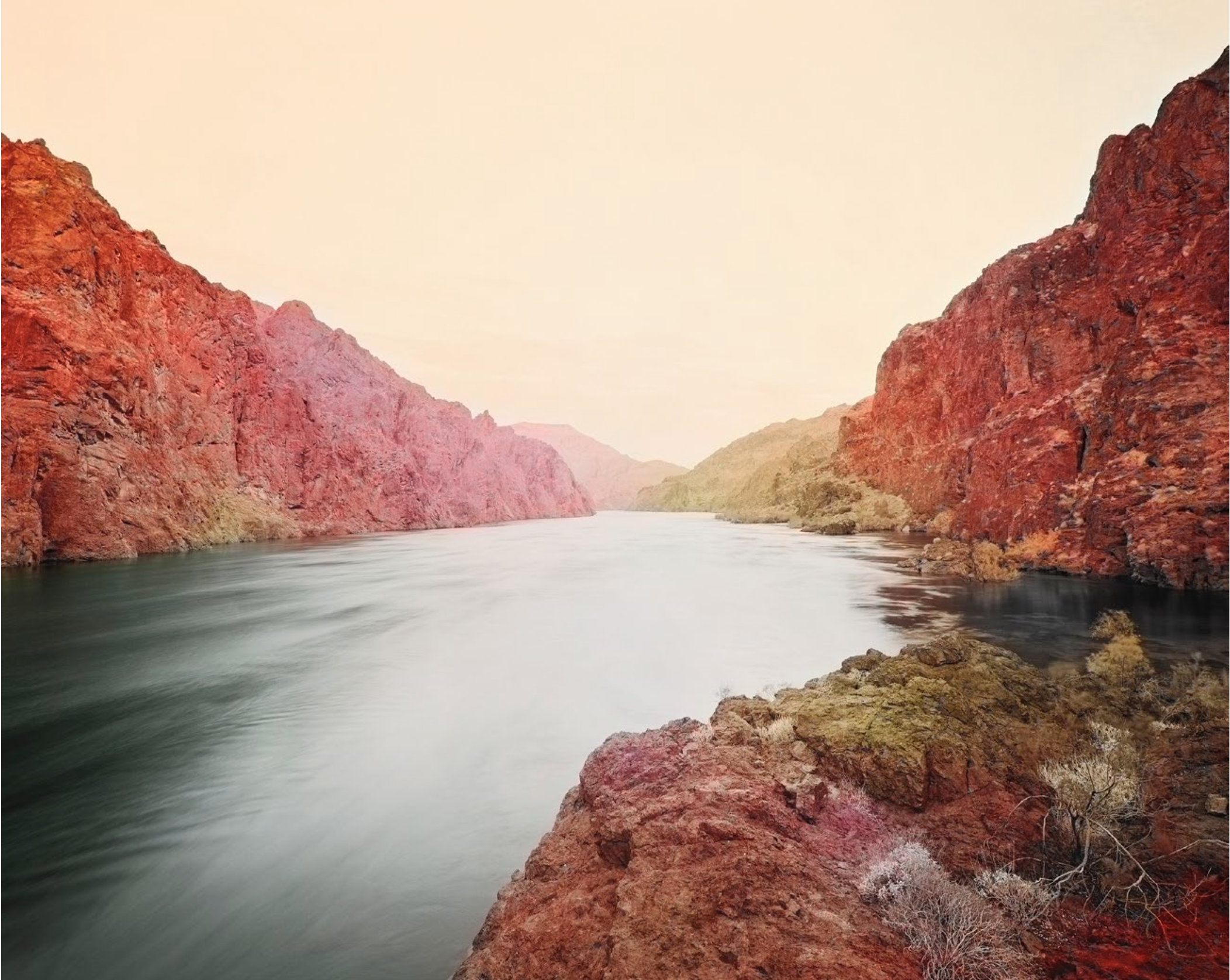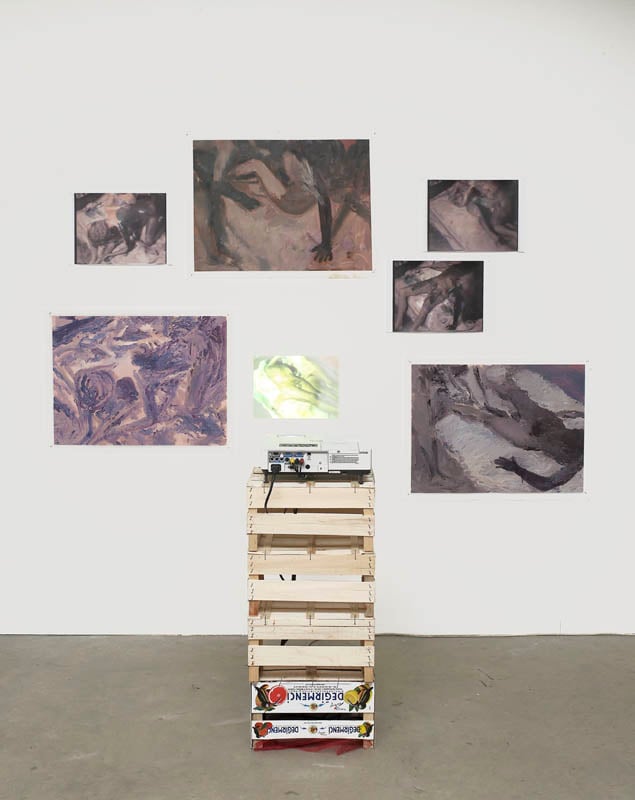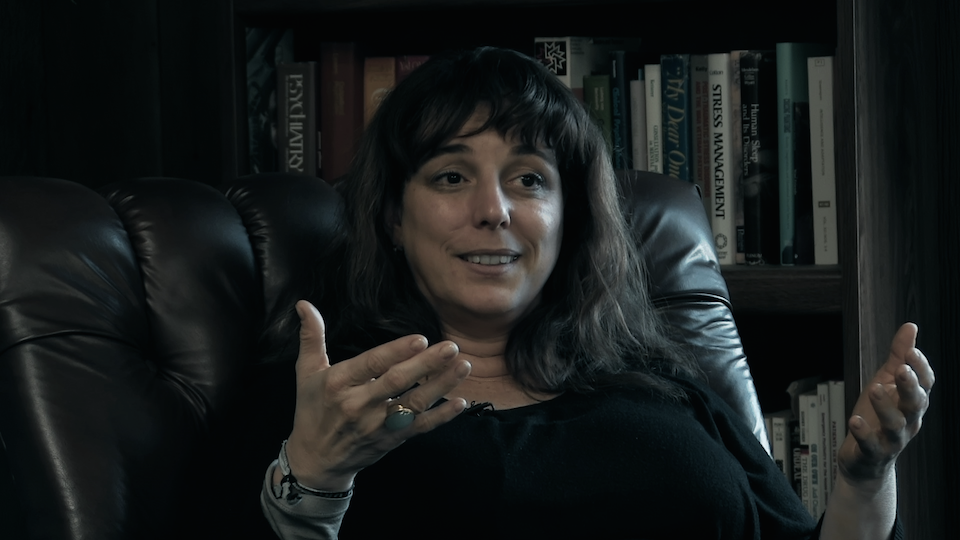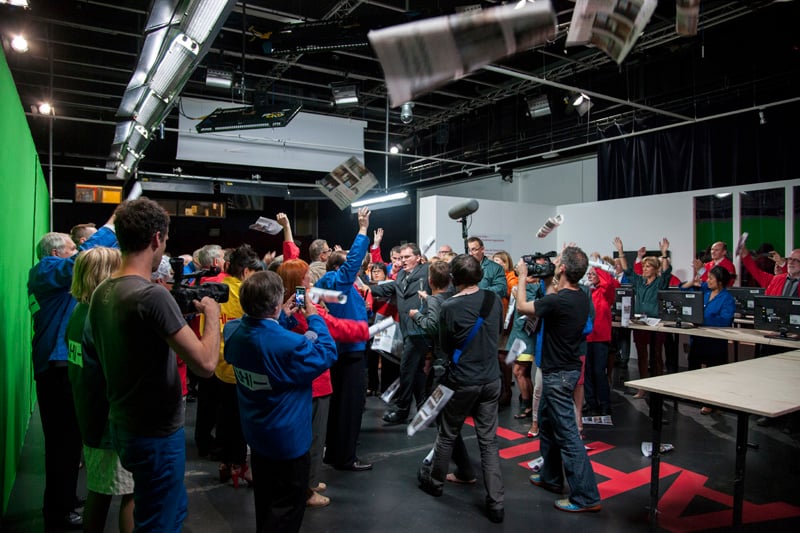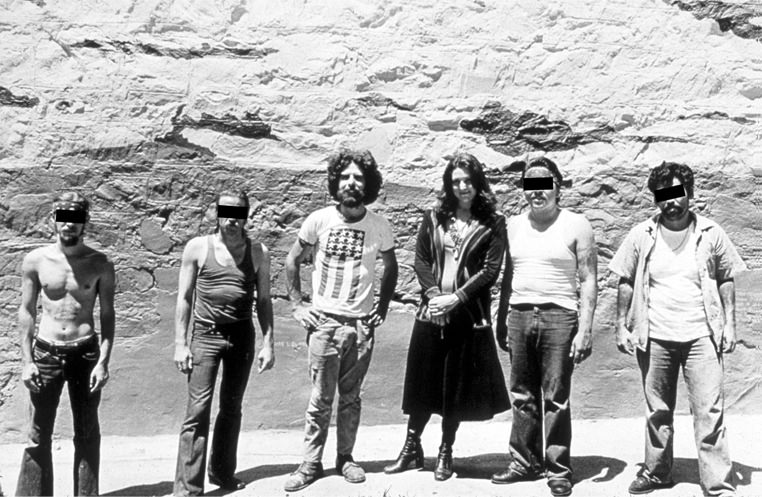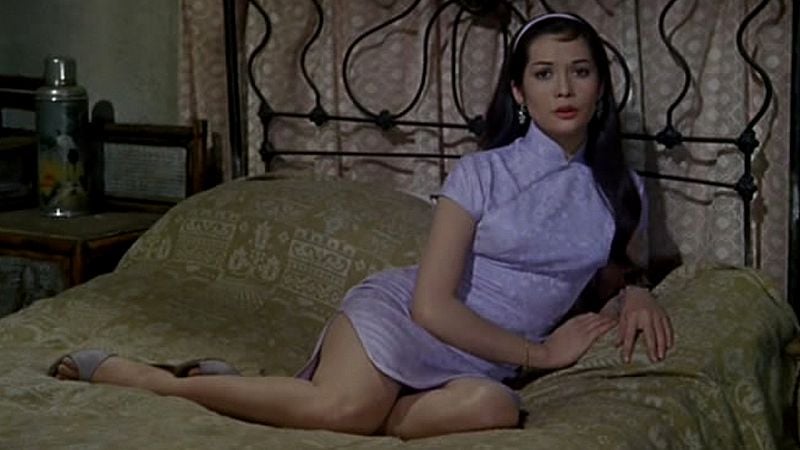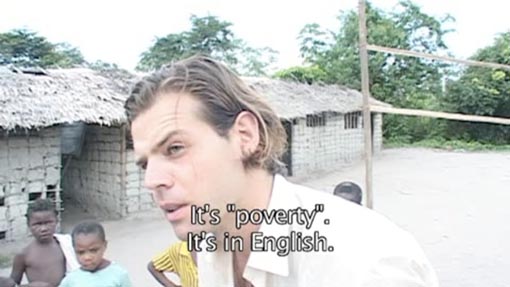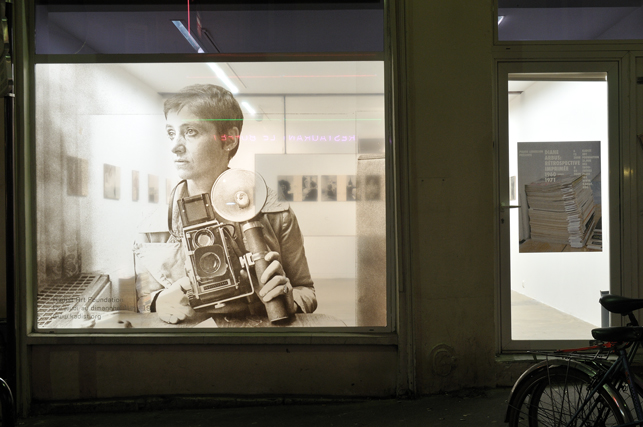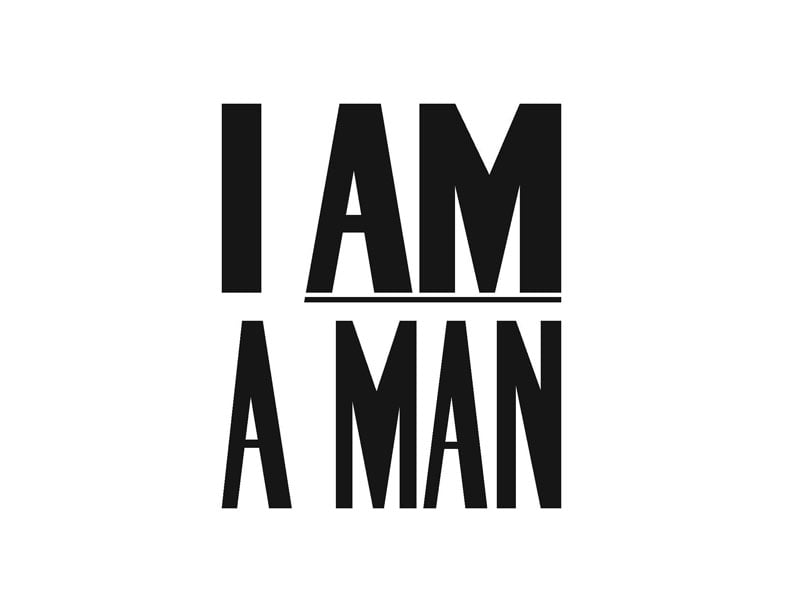
© » KADIST
Aline Baiana
Indigenous educator and curator Sandra Benites, of the Guarani-Ñandeva people, narrates the origin myth of the bird Urutau in her native language. This nightjar stands still on a branch all day long and, at dusk, cries a low hoot resembling a human weeping. In 2013, indigenous activist José Urutau Guajajara remained on the top of a tree for 26 hours, deprived of food and water by state forces.

© » KADIST
Edgardo Aragón
In the agricultural areas of Mexico, Indigenous people use the mylar magnetic tape unspooled from VHS cassettes as an alternative to the scarecrow—the reflective tape flutters in the wind and does an excellent job scaring birds away from crops. This kind of creative reuse of materials (overproduced and devalued) that flow through the global trade of consumer goods, is especially rich in Mexico and other parts of Latin America. In 2020, during a period of isolation due to Covid-19, Edgardo Aragón unspooled a VHS tape and installed it in his father’s crop of corn for six months.

© » KADIST
Lungiswa Gqunta
Feet Under Fire by Lungiswa Gqunta depicts the artist’s lower legs swinging in and out of frame, above a bed of charcoal. She wears a pleated white dress, two identical white anklets, and a set of bristle brushes as shoes. Affixed to the base of each scrubbing brush is a black strap so that the brushes don’t fall off of her feet.

© » KADIST
Santu Mofokeng
Since the global capital expansion, billboards have been the medium of communication between the rulers and the residents of townships. In South Africa, a billboard is a relic from the times when Africans were subjects of power and when townships were restricted areas, subject to laws, municipality by-laws and ordinances regulated the movement of persons and governed who may or may not enter the township. Mofokeng references this medium for control through tracing the history of townships in South Africa.

© » KADIST
Hana Miletic
Incompatibles (Unitas) is made from discarded samples of the yarns that are exported from Croatia and not actually available in the local market. The textile industry in former Yugoslavia has essentially closed down under pressure from Indian and Chinese industries and as a result of the botched privatization of once state-owned factories. There is only one factory remaining in Zagreb producing these yarns.

© » KADIST
Paolo Cirio
Capture is a photographic series by Paolo Cirio in which the artist sourced 1000 public images of police officers’ faces and processed them with facial recognition technology. The original photographs were taken during protests in France, Cirio collected these images and created an online platform containing a database of the 4000 police faces that the AI program isolated. The artist crowdsourced their identification by name and then publicly exposed the officers by printing their headshots and posting them throughout Paris.

© » KADIST
Paolo Cirio
Capture is a photographic series by Paolo Cirio in which the artist sourced 1000 public images of police officers’ faces and processed them with facial recognition technology. The original photographs were taken during protests in France, Cirio collected these images and created an online platform containing a database of the 4000 police faces that the AI program isolated. The artist crowdsourced their identification by name and then publicly exposed the officers by printing their headshots and posting them throughout Paris.

© » KADIST
Natsuko Uchino
Squid Currency is a series of 13 non-calibrated double-sided tin coins made using a casting technique dating back to Neolithic times where cuttlebones (squid bones) were carved by hand and then used as a mold. Natsuko Uchino draws on research into tin mining across the world, which takes place largely in China and Bangladesh as well as in Potosi, Bolivia where silver has been depleted due to the production of coins and other ornate riches during the 16th century Spanish Empire. Tin has a low melting point and is easily up-cycled from vessels such as measuring cups and kitchen utensils found at yard sales.

© » KADIST
Michelle Handelman
Michelle Handelman’s video work Irma Vep, The Last Breath takes its inspiration from Musidora, a famous French silent film actress, and a character she played called Irma Vep, from the film Les Vampires (1915), directed by Louis Feuillade. The work uses these characters as metaphors to highlight the lives of those who live in the shadows—or feel like they do—and the anxiety they experience as marginalized figures. Musidora was a 20th-century feminist, who was known not only for acting in movies, but also for directing her own plays and films, and having secret affairs with Colette and other famous people of the time.

© » KADIST
Annette Kelm
Drawing & Print (Drawing & Print)
Percent for Art is seemingly concerned with “art enrichment” by state or city arts agencies role in it, managing the artist rosters, maintaining public art collections, commissioning artworks, selecting installation sites, among other things for aesthetic and cultural enhancement in both public and private real estate developments. For some, it’s also an opportunity to have desperately needed revenue to counter the displacement of artists and preserve a city or state’s creative spirit. The work, with its serial repetition of percentage signs across six separate bright red panels, appears as splashy retail signage for no apparent sale.

© » KADIST
Daniela Ortiz
In her work, Maids Room (2012) which is part of a series, Daniela Ortiz undertakes an architectural analysis of the houses belonging to the upper class of Lima. Her research highlights the position of ‘service architecture’, the vital space given to the domestics. The project offers an analysis of this room, its size and its position in relation to the rest of the house.

© » KADIST
Juan Brenner
The photographic series Tonatiuh (The Son of the Sun) by Juan Brenner is an in-depth visual study of current Guatemalan society from the perspective of miscegenation and the incalculable consequences of the Spanish conquest. Establishing Spanish conquistador Pedro de Alvarado as a central figure, not only in the conquest of Guatemala, but also in the formation of a complex, segregated society, Brenner proposes a series of images that re-establish the lens through which to consider both a historical and contemporary Guatemala. Tonatiuh is a visual essay on the state of a country on the verge of failure and its incapacity to address its own history and learn from it.

© » KADIST
Tracey Rose
“Maqe II” is at first glance a romantic image of three diaphanous angels hovering in the luminous sky over a South African township. A closer inspection reveals that the apparition is the appropriated figure of Marie Antoinette from the artist’s Ciao Bella series (2001) with the addition of a butchered cake. The figure is Rose herself dressed in costumed made of trash bags holding a haunting paper mâché mask.

© » KADIST
Miguel Angel Rojas
Drawing & Print (Drawing & Print)
In his paper-based work, Medellin-New York , Rojas uses coca leaves and dollar bills to spell out the words of the two cities, tied together through the illicit exchange of materials used to make the word, gesturing towards the uncomfortable reality of the drug trafficking trade and the complicity of both America and Colombia within that economic system.

© » KADIST
Paolo Cirio
Capture is a photographic series by Paolo Cirio in which the artist sourced 1000 public images of police officers’ faces and processed them with facial recognition technology. The original photographs were taken during protests in France, Cirio collected these images and created an online platform containing a database of the 4000 police faces that the AI program isolated. The artist crowdsourced their identification by name and then publicly exposed the officers by printing their headshots and posting them throughout Paris.

© » KADIST
Paz Errázuriz
La manzana de Adán (La Palmera, Santiago) by Paz Errázuriz is part of the celebrated series La manzana de Adán (Adam’s apple) that spans 5 years (1982-1987) of documenting the lives of transgender sex workers in La Jaula and La Palmera brothels in the Chilean cities of Talca and Santiago. The series, whose subjects were extremely subversive, as well as critically vulnerable to the repressive political regime, were finally shown in Chile shortly before the end of the dictatorship in 1990, and later compiled in a book of the same title with texts by Peruvian writer Claudia Donoso. This work portrays a scene at La Palmera brothel in Santiago.

© » KADIST
Colectivo Los Ingrávidos
The word Coyolxauhqui refers to femicide or the killing of women in rural Mexico on the basis of gender. The mutilation of the Aztec moon goddess Coyolxauhqui by her brother Huitzilopochtli, the sun god and human sacrificer, is reimagined in this film. Coyolxauhqui by Colectivo Los Ingrávidos is the first in a trilogy of films that positions itself as a form of political resistance, delving into the relationship between current Mexican femicide and broader cultural traditions.

© » KADIST
Mary Reid Kelley
Situated in German-occupied Belgium at the end of World War I, Y ou Make Me Iliad by Mary Reid Kelley focuses on the story of two. characters: a Belgian prostitute working near the frontlines and a young German soldier charged with monitoring the brothels. Harboring literary aspirations, the soldier goes in search of material to complete his novel.

© » KADIST
Binelde Hyrcan
Binelde Hyrcan’s video “Cambeck” is a playful study of four boys on a beach in Angola playing in a chauffeured car made of sand. Weaved through the seemingly naïve game are themes of poverty, migration and inequality. Speaking of ‘the good life’ in the United States of America, the young boys discuss separated families as a result of migration, unemployment and education, poverty, the dream of leaving the slum for a building with walls made not of tin, and the luxury of the accessibility of transport.
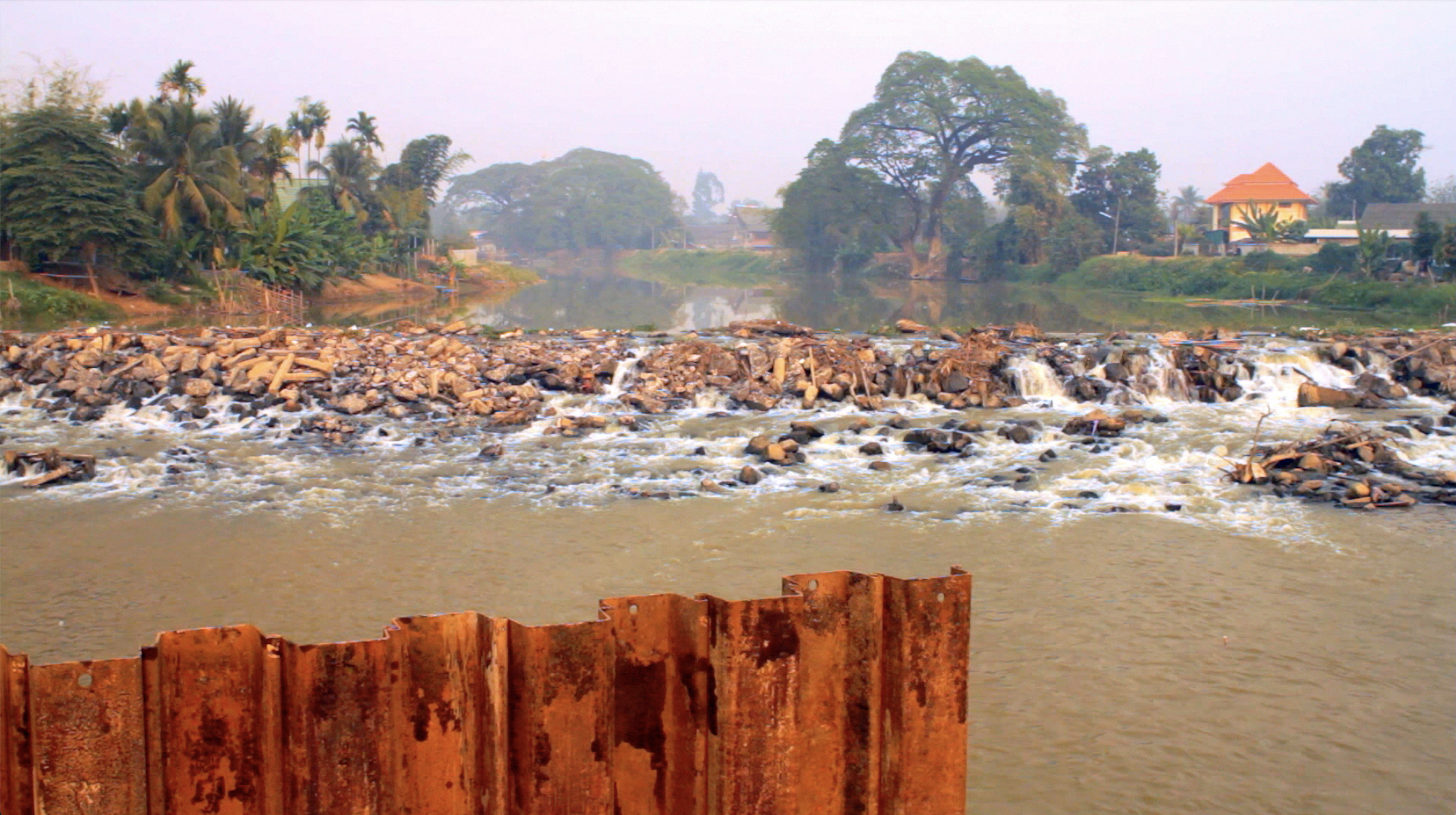
© » KADIST
Som Supaparinya
The flat, wide river holds on its surface a tour-boat of memories, as Som Supaparinya documents her Grandfather’s return via cruise to familiar territories in rural Thailand that were submerged after the Thai government installed a series of dams. An unsettling sense of trauma emerges from the absence of what is being described in My Grandpa’s Route has been Forever Blocked . Supaparinya’s juxtaposition of unceasing waterways and cruise life with a series of dams, obstinately responsible for these conditions.

© » KADIST
Mikhael Subotzky
At the halfway point along South Africa’s Highway N1, running from Cape Town to Johannesburg, sits the small town of Beaufort West. The 1,200-mile highway joins the northern provinces of the country to the south cuts through. Beaufort West becomes the main strip of the township, whereby the thousands of commuters passing through are thus forced to witness the town’s squalid social and economic condition.

© » KADIST
Edgardo Aragón
Drawing & Print (Drawing & Print)
Mesoamericana (Economic activities) is part of a larger project titled Mesoamerica: The Hurricane Effect, which includes a video as well as series of hand drawn maps -based on historical cartography- that examine the effects of foreign power in Mexico today. Mesoamerica was home to a rich civilization that emerged around 10,000 years BC and out of which grew the rich Maya, Aztec and Zapotec cultures, among many others. These cultures were destroyed by the Spanish, who arrived in the 15th and 16th centuries.

© » KADIST
Lubaina Himid
Drawing & Print (Drawing & Print)
In 2007 Lubaina Himid began a series of works she later called Negative Positives: The Guardian Archive (2007-2017). What started out as a one-year project, in the year celebrating the bicentenary of the abolition of slavery in the UK, continued for a decade. Taking a page or a spread of The Guardian (the most liberal newspaper in the UK and her newspaper of choice), Himid sought to expose the unconscious bias manifested in a paper that prides itself on its non-discriminatory policies.

© » KADIST
Lam Tung Pang
Drawing & Print (Drawing & Print)
Lam Tung Pang created Sketches from train ride Chicago to San Francisco during his travels through the United States researching American curatorial strategies for representing traditional Chinese painting in museums and cultural institutions. The drawings incorporate both traditional and contemporary Chinese landscape techniques to reflect on the memory, history, and aesthetic practices of the Chinese laborers who played a prominent role in the American westward expansion. By representing the Western landscape according to Chinese aesthetics, Lam calls attention to the distortions and cultural specificity of American representations of the Western landscape and non-Western cultures.

© » KADIST
Laetitia Sonami
Although at first the work Sounds of War presents itself with a degree of playfulness and humour, a close inspection reveals its painful undertone. The sound installation by Laetitia Sonami is comprised by a series of toilet plungers retrofitted with speakers that audiences are encouraged to engage with. As viewers interact with the modified domestic objects, placing them over their ears, a soundtrack plays audio sourced by the artist from Youtube videos, which feature the haunting voices of women and children in several war zones (Srebrenica, Darfur, Fallujah, Gaza and Iraq).

© » KADIST
Engel Leonardo
As with so many other colonized geographies, the ways in which violence has become a natural and expected component of Santo Domingo reflects the forced friendship between the beneficiaries and residues of Modernism. What distinguishes these two communities? What separates them?

© » KADIST
Halil Altindere
Wonderland is a music video for the Turkish hip-hop group Tahribad-I Isyan (Rebellion of Destruction). The young hip-hop artists respond with anger and defiance to their forced expulsion from Sulukule, a historic Roma settlement in Istanbul, due to a redevelopment project. Their lyrics address issues of gentrification and inequality, while their actions show the possibilities for both violent and artistic rebellion.

© » KADIST
Felix Gmelin
In Untitled (after Paul Schultze Nuremberg’s Kunst) (2006), from a larger series of diptychs, Gmelin addresses the notion of entartete kunst ( “Degenerate Art”) . Each diptych juxtaposes a portrait of a person considered to be mentally handicapped with a painting that was branded by the Nazi regime as degenerate. Gmelin’s source for these images is Kunst und Rasse (“Art and Race”), a book by Paul Schultze Naumburg published in 1928.

© » KADIST
Lubaina Himid
Drawing & Print (Drawing & Print)
In 2007 Lubaina Himid began a series of works she later called Negative Positives: The Guardian Archive (2007-2017). What started out as a one-year project, in the year celebrating the bicentenary of the abolition of slavery in the UK, continued for a decade. Taking a page or a spread of The Guardian (the most liberal newspaper in the UK and her newspaper of choice), Himid sought to expose the unconscious bias manifested in a paper that prides itself on its non-discriminatory policies.
Paolo Cirio
Artist Paolo Cirio engages with legal, economic, and cultural systems of information...
Hank Willis Thomas
- location: New York, New York
- year born: 1976
- gender: male
- nationality: American
- home town: Plainfield, New Jersey
Lubaina Himid
- location: Zanzibar, Tanzania
- year born: 1954
- gender: female
- nationality: Tanzanian
Daniela Ortiz
In order to reveal and critique hegemonic structures of power, Daniela Ortiz constructs visual narratives that examine concepts such as nationality, racialization, and social class...
Miguel Angel Rojas
For Colombian artist Miguel Ángel Rojas, issues of economic and social inequality in his native country provide fodder to his artistic practice...
Runo Lagomarsino
- location: Malmo, Sweden
- location: Sao Paolo, Brazil
- year born: 1977
- gender: male
- nationality: Italian-Argentine-Swedish
- home town: Sweden
Trevor Paglen
Trevor Paglen’s work combines the knowledge-base of artist, geographer and activist...
Mary Reid Kelley
Drawing from literature, plays, and historical events, Mary Reid Kelley makes rambunctious videos that explore the condition of women throughout history...
Alessandro Balteo Yazbeck
- location: Berlin, Germany
- year born: 1972
- gender: male
- nationality: Venezuelan
- home town: Caracas, Venezuela
Andrea Bowers
- location: Los Angeles, California
- year born: 1965
- gender: female
- nationality: American
- home town: Wilmington, Ohio
Hong-Kai Wang
Wang is an artist working primarily with sound...
Apostolos Georgiou
Inescapably political, Apostolos Georgiou’s paintings are realized by bold and mastered brush strokes...
Laetitia Sonami
Based in San Francisco, Laetitia Sonami is a French-born electronic composer, performer, sound installation artist and educator...
Joscelyn Gardner
Joscelyn Gardner is a Caribbean / Canadian visual artist working primarily with printmaking and multimedia installation...
Minerva Cuevas
- location: Mexico City, Mexico
- year born: 1975
- gender: female
- nationality: Mexican
- home town: Mexico City, Mexico
Felix Gmelin
With a degree in painting and inspired by so-called institutional criticism, Felix Gmelin is interested in the possibilities of painting as a form of resistance and its direct relation to a form of socio-political reality...
Binelde Hyrcan
Growing up during the Angolan Civil War, Binelde Hyrcan (b...
Lam Tung Pang
Lam Tung Pang uses both traditional and non-traditional Chinese ink techniques and materials for his landscapes, referencing notions of collective memory that relate to specific sites...
Zanele Muholi
- year born: 1972
- gender: female
- nationality: South African
- home town: Umlazi, Durban, South Africa
Juan Brenner
Born and raised in Guatemala, photographer Juan Brenner spent ten years in New York City working in the fashion industry before returning to his home country in 2008...
Mikhael Subotzky
Mikhael Subotzky’s (b...
Tuan Andrew Nguyen
Tuan Andrew Nguyen is an artist and filmmaker, one of the three founders of The Propeller Group created in 2006...
Engel Leonardo
Working with various mediums, from sculpture to installation, site-specific interventions, and readymades, Leonardo Engel addresses issues related to the climate, nature, traditional crafts, architecture, and popular culture of the Caribbean...
Jesse Krimes
Jesse Krimes is an artist, curator, educator, former inmate, and activist whose work tackles and fights the US prison-industrial complex...
Claudia Joskowicz
Claudia Joskowicz is a video and installation artist working at the intersection of landscape, history, and memory...
Lynn Hershman Leeson
- location: San Francisco, California
- year born: 1941
- gender: female
- nationality: American
- home town: Cleveland, Ohio
Huang Xiaopeng
Huang Xiaopeng is a video and installation artist...
Halil Altindere
Halil Altindere has been prominent in Istanbul’s contemporary arts since the mid-1990s...
Bani Abidi
Bani Abidi’s practice deals heavily with political and cultural relations between India and Pakistan; she has a personal interest in this, as she lives and works in both New Delhi and Karachi...
-
1980-1989
Santu Mofokeng
1985Since the global capital expansion, billboards have been the medium of communication between the rulers and the residents of townships...
Paz Errázuriz
1986La manzana de Adán (La Palmera, Santiago) by Paz Errázuriz is part of the celebrated series La manzana de Adán (Adam’s apple) that spans 5 years (1982-1987) of documenting the lives of transgender sex workers in La Jaula and La Palmera brothels in the Chilean cities of Talca and Santiago...
-
2000-2009
Tracey Rose
2001“Maqe II” is at first glance a romantic image of three diaphanous angels hovering in the luminous sky over a South African township...
Mikhael Subotzky
2006At the halfway point along South Africa’s Highway N1, running from Cape Town to Johannesburg, sits the small town of Beaufort West...
Laetitia Sonami
2006Although at first the work Sounds of War presents itself with a degree of playfulness and humour, a close inspection reveals its painful undertone...
Felix Gmelin
2006In Untitled (after Paul Schultze Nuremberg’s Kunst) (2006), from a larger series of diptychs, Gmelin addresses the notion of entartete kunst ( “Degenerate Art”) ...
Minerva Cuevas
Drawing & Print
2006(Drawing & Print) During her research on primitive currencies and cultural cannibalism, Cuevas came across the Donald Duck comic book issue “The Stone Money Mystery,” where Donald goes on a quest to find missing museum objects...
Wong Wai Yin
2008In this work the artist stages a humorously violent “intervention” against male-dominated cultures of art production in present-day China...
Alessandro Balteo Yazbeck
2008Part of a larger series of photographic works, Alessandro Balteo Yazbeck’s Corrupted file from page 14 (V1) from the series La Vega, Plan Caracas No...
Joscelyn Gardner
Drawing & Print
2009(Drawing & Print) Creole Portraits III alludes to the 18th century practice by slave women on Caribbean plantations of using tropical plants as natural abortifacients...
-
2010-2019
Mary Reid Kelley
2010Situated in German-occupied Belgium at the end of World War I, Y ou Make Me Iliad by Mary Reid Kelley focuses on the story of two...
Andrea Bowers
Drawing & Print
2010(Drawing & Print) The small drawings that comprise Study from May Day March, Los Angeles 2010 (Immigration Reform Now) and We Are Immigrants Not Terrorists are based on photographs taken at a political rally in downtown Los Angeles in which thousands of individuals demonstrated for immigrants’ rights...
Miguel Angel Rojas
Drawing & Print
2011(Drawing & Print) In his paper-based work, Medellin-New York , Rojas uses coca leaves and dollar bills to spell out the words of the two cities, tied together through the illicit exchange of materials used to make the word, gesturing towards the uncomfortable reality of the drug trafficking trade and the complicity of both America and Colombia within that economic system....
Binelde Hyrcan
2011Binelde Hyrcan’s video “Cambeck” is a playful study of four boys on a beach in Angola playing in a chauffeured car made of sand...
Engel Leonardo
2011As with so many other colonized geographies, the ways in which violence has become a natural and expected component of Santo Domingo reflects the forced friendship between the beneficiaries and residues of Modernism...
Hong-Kai Wang
2011The video Music While We Work (2011) is the first part/work of a long-term research project started in 2010...
Huang Xiaopeng
2011Four knives appearing as if thrown at the wall to alleviate frustration and boredom, form rhythmic shadows and markings of time above a translated phrase boldly printed in simplified Chinese and English...
Daniela Ortiz
2012In her work, Maids Room (2012) which is part of a series, Daniela Ortiz undertakes an architectural analysis of the houses belonging to the upper class of Lima...
Som Supaparinya
2012The flat, wide river holds on its surface a tour-boat of memories, as Som Supaparinya documents her Grandfather’s return via cruise to familiar territories in rural Thailand that were submerged after the Thai government installed a series of dams...
Tuan Andrew Nguyen
2012This work presents the image of an immolated monk engraved on a baseball bat...
Bani Abidi
2012The perceived effortlessness of power, projecting above experiences of labored subordination is examined in Death at a 30 Degree Angle by Bani Abidi, which funnels this projection of image through the studio of Ram Sutar, renowned in India for his monumental statues of political figures, generally from the post-independence generation...
Hank Willis Thomas
2012Bread and Roses takes its name from a phrase famously used on picket signs and immortalized by the poet James Oppenheim in 1911...
Annette Kelm
Drawing & Print
2013(Drawing & Print) Percent for Art is seemingly concerned with “art enrichment” by state or city arts agencies role in it, managing the artist rosters, maintaining public art collections, commissioning artworks, selecting installation sites, among other things for aesthetic and cultural enhancement in both public and private real estate developments...
Lam Tung Pang
Drawing & Print
2013(Drawing & Print) Lam Tung Pang created Sketches from train ride Chicago to San Francisco during his travels through the United States researching American curatorial strategies for representing traditional Chinese painting in museums and cultural institutions...
Halil Altindere
2013Wonderland is a music video for the Turkish hip-hop group Tahribad-I Isyan (Rebellion of Destruction)...
Daniela Ortiz
2013Previously, Ortiz produced a series of photographs related to her research on the position of ‘service architecture’, the vital space given to domestic servants in the modernist architectural houses of South American upper class families...
Hank Willis Thomas
2013The image is borrowed from protests during Civil Rights where African Americans in the south would carry signs with the same message to assert their rights against segregation and racism...
Claudia Joskowicz
2014Los rastreadores is a two-channel video by Claudia Joskowicz narrating the story of a fictitious drug lord, Ernesto Suarez, whose character is based on the well-known Bolivian drug dealer, Roberto Suárez...
Zanele Muholi
2014As a visual activist for the rights of Lesbian, gay, bisexual, transgender, queer and intersex (LBGTQI), Muholi’s photographs radically transgress the conventional perception of lesbian and transgender communities in South Africa...
Michelle Handelman
2015Michelle Handelman’s video work Irma Vep, The Last Breath takes its inspiration from Musidora, a famous French silent film actress, and a character she played called Irma Vep, from the film Les Vampires (1915), directed by Louis Feuillade...
Adriana Martínez
2015Her work Al final del arcoiris (At the end of the rainbow, 2015) is a bundle of bills from Chile, Venezuela, Brazil, Colombia, Nicaragua, and Costa Rica, arranged by color to form a tight spiraling rainbow held close with a rubber band...
Aline Baiana
2016Indigenous educator and curator Sandra Benites, of the Guarani-Ñandeva people, narrates the origin myth of the bird Urutau in her native language...
Edgardo Aragón
Drawing & Print
2016(Drawing & Print) Mesoamericana (Economic activities) is part of a larger project titled Mesoamerica: The Hurricane Effect, which includes a video as well as series of hand drawn maps -based on historical cartography- that examine the effects of foreign power in Mexico today...
Titus Kaphar
2016Although the objects depicted in Titus Kaphar’s diptych 2016/1963 might not be immediately recognizable, the work’s title and the inscriptions ‘Alabama 1963’ and ‘North Dakota 2016’ reveal their use as tools of brutal force...
Lungiswa Gqunta
2017Feet Under Fire by Lungiswa Gqunta depicts the artist’s lower legs swinging in and out of frame, above a bed of charcoal...
Colectivo Los Ingrávidos
2017The word Coyolxauhqui refers to femicide or the killing of women in rural Mexico on the basis of gender...
Trevor Paglen
2017Trevor Paglen’s ongoing research focuses on artificial intelligence and machine vision, i.e...
Lynn Hershman Leeson
2017Using the seminal 1958 film Vertigo as a launchpad, Lynn Hershman Leeson explores the blurred lines between fact and fantasy in VertiGhost , a film commissioned by the Fine Arts Museums in San Francisco...
Juan Brenner
2018The photographic series Tonatiuh (The Son of the Sun) by Juan Brenner is an in-depth visual study of current Guatemalan society from the perspective of miscegenation and the incalculable consequences of the Spanish conquest...
Francisca Benítez
2018You have given the world your songs by Francisca Benítez is a poem in American Sign Language (ASL)...
Hana Miletic
2019Incompatibles (Unitas) is made from discarded samples of the yarns that are exported from Croatia and not actually available in the local market...
-
2020-2029
Edgardo Aragón
2020In the agricultural areas of Mexico, Indigenous people use the mylar magnetic tape unspooled from VHS cassettes as an alternative to the scarecrow—the reflective tape flutters in the wind and does an excellent job scaring birds away from crops...
Paolo Cirio
2020Capture is a photographic series by Paolo Cirio in which the artist sourced 1000 public images of police officers’ faces and processed them with facial recognition technology...
Paolo Cirio
2020Capture is a photographic series by Paolo Cirio in which the artist sourced 1000 public images of police officers’ faces and processed them with facial recognition technology...
Natsuko Uchino
2020Squid Currency is a series of 13 non-calibrated double-sided tin coins made using a casting technique dating back to Neolithic times where cuttlebones (squid bones) were carved by hand and then used as a mold...
Paolo Cirio
2020Capture is a photographic series by Paolo Cirio in which the artist sourced 1000 public images of police officers’ faces and processed them with facial recognition technology...
Jesse Krimes
2020Raybrook by Jesse Krimes takes its name from The Federal Correctional Institution, Ray Brook (FCI Ray Brook), a medium-security United States federal prison for male inmates located in Essex County, NY...
Runo Lagomarsino
Drawing & Print
2020(Drawing & Print) On Fire by Runo Lagomarsino comprises twenty pieces of parchment, each of which has had the contours and map of Brazil burned in stages...




